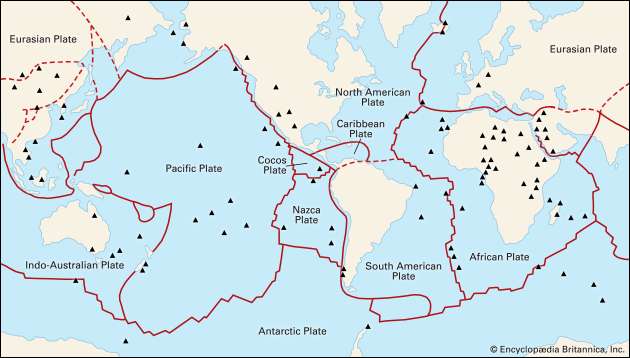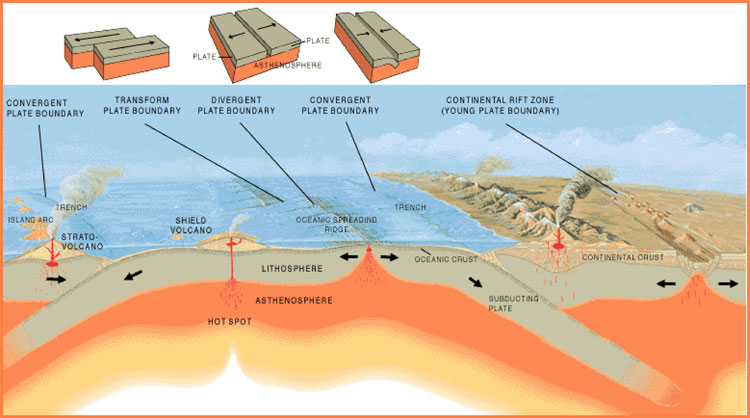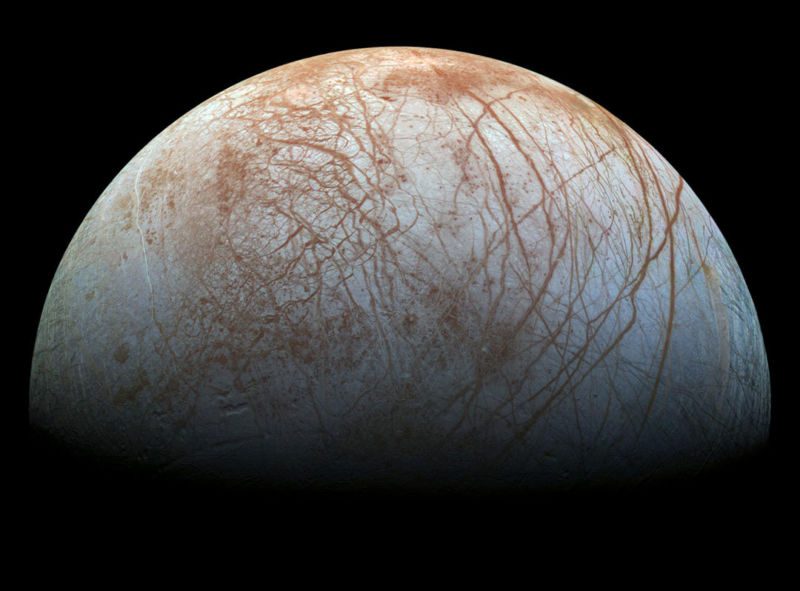
Plate tectonics have long been thought to have been necessary for the development of life on Earth, in part due to making it easier for volcanoes to release essential gases into the atmosphere. But now, new research suggests that may not be the case after all, which could also mean a greater chance of planets without plate tectonics being able to host life as well. The new findings come from geoscientists at Penn State, and have been published in the peer-reviewed journal Astrobiology.
According to Bradford Foley, assistant professor of geosciences:
Volcanism releases gases into the atmosphere, and then through weathering, carbon dioxide is pulled from the atmosphere and sequestered into surface rocks and sediment. Balancing those two processes keeps carbon dioxide at a certain level in the atmosphere, which is really important for whether the climate stays temperate and suitable for life.

It is significant that most of Earth’s volcanoes are located at the edges of tectonic plates, where subduction can help the carbon cycling process by pushing carbon into the mantle. This was essential for life being able to evolve and flourish on Earth, and so scientists assumed that tectonic plates would be necessary for life to develop on other worlds, too.
So far, Earth is the only planet known to have plate tectonics, where the crust is divided into pieces (plates) which float on top of the mantle, although there is now some evidence that Jupiter’s moon Europa does as well. When a planet does not have plate tectonics, it is called a stagnant lid planet, where the crust is one giant, unbroken spherical plate itself.
Foley and his colleagues wanted to investigate whether plate tectonics were really as necessary as thought, so they created a computer model of the life cycle of a planet. They wanted to know just how much heat a planet could retain after formation – the heat budget, or amount of heat and heat-producing elements present when a planet forms. The thinking was that there would be less heat available for the climate of stagnant lid planets, meaning less volcanism and less liquid water.

The research team ran hundreds of computer simulations, with various sizes and chemical compositions of a planet, and found that even stagnant lid planets can retain enough heat for liquid water for billions of years. They could even maintain life for up to about 4 billion years, similar to Earth’s “life span” so far. Volcanism can still occur, although it is shorter-lived than on planets with tectonic plates. As explained by Andrew Smye, assistant professor of geosciences:
You still have volcanism on stagnant lid planets, but it’s much shorter lived than on planets with plate tectonics because there isn’t as much cycling. Volcanoes result in a succession of lava flows, which are buried like layers of a cake over time. Rocks and sediment heat up more the deeper they are buried.
This is good news for rocky planets which don’t have plate tectonics – they could still be capable of supporting life. On Earth, carbon dioxide makes its way to the surface with water through subduction fault zones, but on planets without plate tectonics, it could still do so, with enough heat and pressure, by escaping from rocks through the process of degassing. As Foley noted:
There’s a sweet spot range where a planet is releasing enough carbon dioxide to keep the planet from freezing over, but not so much that the weathering can’t pull carbon dioxide out of the atmosphere and keep the climate temperate.

The results underscore how a planet’s composition will affect its potential habitability; life may still be easier to develop on a planet with plate tectonics, but planets lacking plate tectonics can still have a good chance of life starting, taking into account factors such as available water, stable climate, chemical nutrients, etc. As Smye concluded:
One interesting take-home point of this study is that the initial composition or size of a planet is important in setting the trajectory for habitability. The future fate of a planet is set from the outset of its birth.
Bottom line: Scientists have long thought that plate tectonics were necessary for life to evolve on Earth, and by extension, on other planets as well. A new research study shows that this might not be true, however, and many rocky exoplanets without tectonic plates could still support life of some kind.
Source: Carbon cycling and habitability of Earth-size stagnant lid planets
Via Penn State News











